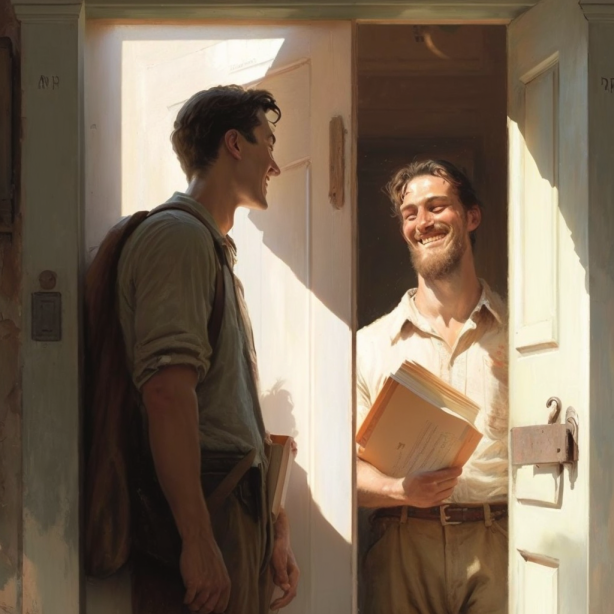I had a chance to chat with one of our partners and customers, Rich Walsh, over at Growth Operations Firm. Net-net, marketing is undergoing..

The Impact of Personalization on Email Open Rates: A Deep Dive
Introduction
Here's something not worth arguing over: email remains the greatest B2B marketing channel.
Let's also not argue about this (please?): it's also the most personal channel and it absolutely demands a personal touch.
The constant barrage of emails that professionals receive daily dictates that we have to stand out. One proven way to achieve this is through personalization. In this blog post, we'll explore the impact of personalization on email open rates, supported by research and expert opinions. You know... so you can go and get resources to ensure you can actually personalize your emails.
Ready? Let's takeoff!
The Power of Personalization
According to a study by Experian, personalized emails have a 29% higher unique open rate and 41% higher unique click rates compared to non-personalized emails (Experian, 2018). This clearly demonstrates the power of personalization in driving engagement.
Let's put that into perspective for the average software company.
According to recent benchmark data from Mailchimp (2023), your average email open rates is 21.29% and your average click rate is 2.45%.
If you sent a marketing campaign to 10,000 contacts:
| Non-Personalized | Personalized | |
| Opens | 2,130 | 2,746 |
| Clicks | 52 | 94 |
That's more than 80% more clicks.
Do a little back-of-the-napkin math for yourself on your web conversion rates, average deal size, volume of marketing emails annually, and win rates and you start to get an idea of what that's worth. For the sake of clarity, let's do that here...
Let's assume our software company example has an average web-to-lead conversion rate of 5% and a win rate of 20% with an average deal size of $25,000:
| Non-Personalized | Personalized | |
| Clicks | 52 | 94 |
| Leads | 2.6 | 4.7 |
| Won Deals | .52 (woof) | .94 |
| Revenue | $13,000 | $23,500 |
You can almost forecast a deal with the personalized campaign.
The non-personalized campaign, however? That's a lot of effort for probably nothing.
I get these are estimates, but throw your own averages in. You'll see a version of this story. The impact of personalization on email marketing results starts way up with subject line personalization and everything else plays out from there.
However, personalization goes beyond merely adding the recipient's first name to the subject line. It involves understanding your audience's preferences, behavior, and needs to deliver highly targeted and relevant content.
Personalization Increases Relevance and Engagement
When recipients see their name or other personalized elements in an email, they're more likely to believe that the content is tailored to their interests and needs. This psychological effect, known as the "cocktail party effect," explains why people are more likely to pay attention when they hear their name or other personally relevant information (Wood & Cowan, 1995).
I mean, your mom never screamed, "hey, kid!" out the back door to call you in for dinner. Or maybe they did (but that'd be weird).
And that's just leveraging a first name. There's so much more you can do.
By understanding your audience and providing personalized content, you can create a sense of familiarity and trust with your brand. This, in turn, increases the likelihood that recipients will open and engage with your emails.
Improved Segmentation and Automation
To maximize the benefits of personalization, it's essential to segment your audience based on various factors, such as demographics, job title, industry, and behavioral data (McKinsey, 2019). This enables you to send targeted content that resonates with each segment. Yes, even in the subject line.
Here are things we've leveraged here at ATC:
- First Name: "Hey, Sandy, we pulled something together for you"
- website content volume: "There are 172 blogs on your website. Did you know this about them?"
- most common marketing content topics of the customer's website: "Financial systems, tulips, and tractors are your most common web topics. But are they the most interesting?"
- insights about their interests and company: "How do baseball and logistics relate?"
- event attendance: "See you at the B2B Marketing Expo!"
- competitors and peers who are customers: "What do Toyota and Honda know that Ford doesn't?"
- local weather: "It might be raining in San Francisco, but it's always sunny in the Control Tower"
You get the idea. So much is possible. But given the math in the section above this, there's immense opportunity in finding a scalable way to personalize subject lines.
Best Practices for Personalized Email Campaigns
-
Leverage Data and Analytics: Use available data from your CRM system, website analytics, and email marketing platform to understand your audience and their preferences. This will enable you to create content that resonates with them.
-
Use Dynamic Content: Dynamic content allows you to tailor specific elements of an email based on the recipient's data. For example, you can showcase different case studies or testimonials based on the recipient's industry or job title.
-
Experiment with Subject Lines: Test various personalization tactics (our list above is NOT exhaustive - get creative!) in your subject lines, such as using the recipient's name, company, or a recent event they attended. Monitor the performance of these subject lines to identify what works best for your audience.
-
Test and Optimize: Continuously test and analyze your personalized email campaigns to identify areas for improvement. This can involve testing different types of personalization, email designs, and send times.
Conclusion
Personalization can have a significant impact on email open rates in B2B marketing. By understanding your audience and delivering targeted content, you can increase the relevance and engagement of your email campaigns. To maximize the benefits of personalization, it's crucial to leverage data and analytics, implement marketing automation tools, and continuously test and optimize your campaigns.
Sources:
-
Experian. (2018). The 2018 Global Email Benchmark Report. Retrieved from https://www.experian.com/assets/marketing-services/reports/2018-global-email-benchmark-report.pdf
- Mailchimp (2023). Email Marketing Benchmarks. Available here: https://mailchimp.com/resources/email-marketing-benchmarks/
-
Wood, N., & Cowan, N. (1995). The cocktail party phenomenon revisited: How frequent are attention shifts to one's name in an irrelevant auditory channel? Available to read for free here: http://wexler.free.fr/library/files/wood%20(1995)%20the%20cocktail%20party%20phenomenon%20revisited.%20how%20frequent%20are%20attention%20shifts%20to%20one's%20name%20in%20an%20irrelevant%20auditory%20channel.pdf
- McKinsey. (2019). The Future of Personalization and How to Get Ready for It: https://www.mckinsey.com/capabilities/growth-marketing-and-sales/our-insights/the-future-of-personalization-and-how-to-get-ready-for-it

Subscribe to the
Air Trafic Control newsletter
Receive regular tips and resources to boost your establishment!
Related Blogs
We have something for everyone on our blog. Dig in!
As we at Air Traffic Control (ATC) have been growing and exploring our optimal product-market fit, we uncovered an interesting dichotomy..
Introduction I had a chance to connect with Penguin AI's co-founder, John DiLoreto, and I was struck by how rapidly GTM is evolving. We all..

